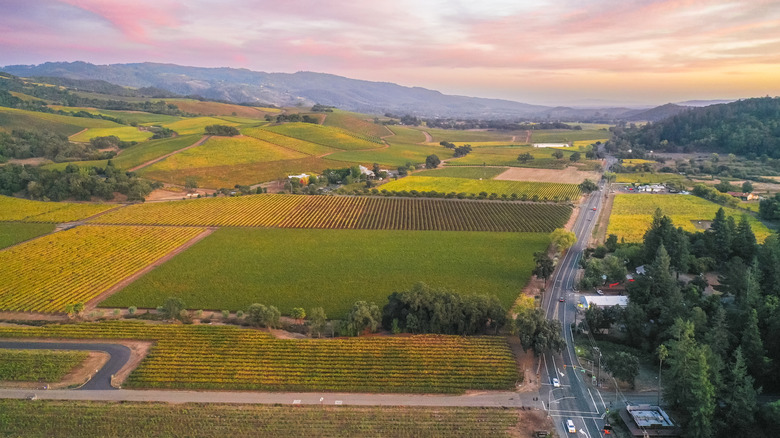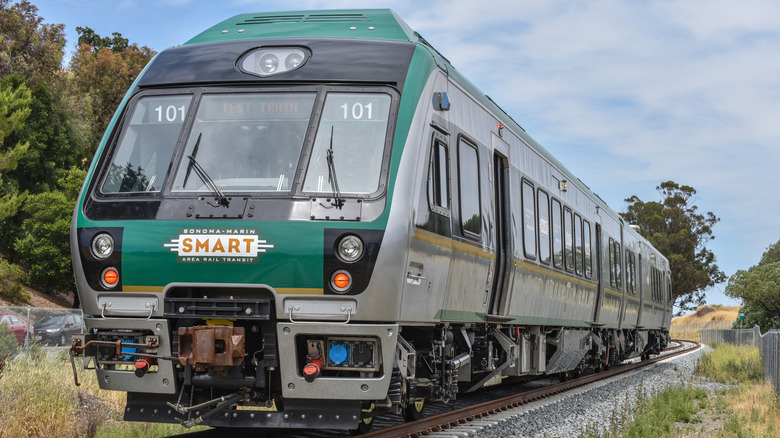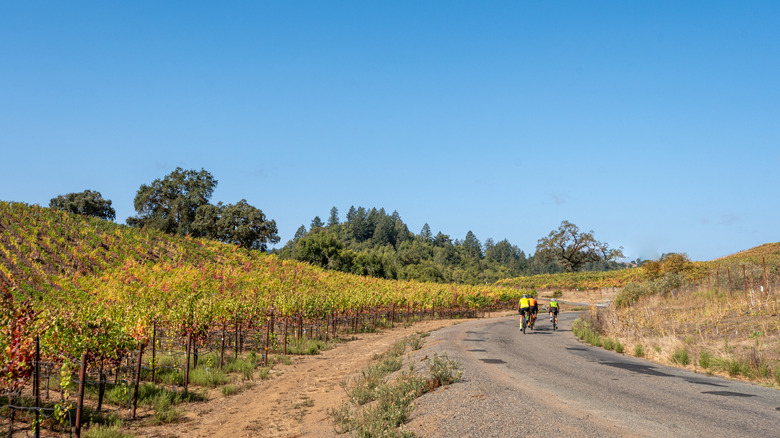A Train Network Between San Francisco And Santa Rosa Hits The Best Of California's Sonoma County Wine Country
With its unique geography, the Bay Area boasts an unconventional public transport system. The network includes historic cable cars, the underground BART (Bay Area Rapid Transit), Caltrain, Muni, Amtrak service from Oakland, and the Golden Gate and San Francisco Bay Ferries. In 2017, the Sonoma-Marin Area Rail Transit (SMART) joined the mix, linking Larkspur with the Sonoma County Airport. Weaving through Northern California's renowned wine region — an area famous for its pinot noir and chardonnay production, most of which is cultivated on small, family-run farms — this is the first time San Francisco has been directly connected to Sonoma County by a seamless public transport route. In classic Bay Area fashion, the project also features a recreational bike and walking path alongside the tracks.
The SMART train offers a safe, reliable alternative to Bay Area traffic while passing through some of Northern California's most scenic landscapes. It runs 45 miles between Larkspur, San Rafael, Novato, Petaluma, Cotati, and Santa Rosa, ending at the Sonoma County Airport. The recreational pathway parallel to the tracks forms the southern portion of the Great Redwood Trail, a 307-mile route that will eventually connect San Francisco and Humboldt Bay.
Phase one of the SMART project was completed in 2017. The addition of the Larkspur station in 2019 bridged an important public transport gap between the Golden Gate Ferry Terminal (San Francisco's iconic waterfront marketplace) and Sonoma County, effectively integrating the North Bay into a cohesive transportation network. A second phase of the SMART project is expected to extend the line from 45 to 70 miles, adding new stops in Windsor, Cloverdale, and Healdsburg, an underrated California wine town reminiscent of Tuscany.
Everything you need to know about traveling on the SMART train
The SMART train runs parallel to Highway 101 — one of San Francisco's two main highways that travels through the city, across the Golden Gate Bridge, and through Marin County, ultimately linking Los Angeles with Washington state. This road is notorious for heavy traffic, which is no surprise considering San Francisco's population of over 840,000 people and the 200,000-plus commuters traveling to work in the city every day.
Before the SMART train existed, getting from San Francisco to Sonoma County meant braving the traffic on Highway 101 by car or juggling a mix of multiple buses and ferries. Today, you can take a one-hour bus ride from central San Francisco to Larkspur on the 130 or 150 bus via Sausalito and Marin. The better option is to take a scenic 30-minute ferry ride from the San Francisco Ferry Terminal to Larkspur, where the SMART Connect Shuttle links directly to the train. From Larkspur, it's around an hour and 15 minutes to the Sonoma County Airport, with 12 stops along the way.
SMART fares are based on a zoning system, starting from $1.50 to transit within one zone and $7.50 to travel across five areas. A Weekend Day Pass costs $10 and allows unlimited rides for one day. SMART operates using the same payment system as San Francisco's Muni and ferries — the Clipper Card, a reloadable virtual or physical card. Each two-car train has space for 24 bikes in secure racks, making it an easy choice for cycling trips.
Biking along the SMART Pathway, the southern portion of the Great Redwood Trail
Cycling is a big part of the Bay Area's active culture, and the SMART Pathway adds to the region's already extensive bike-friendly infrastructure. Those using their own bikes can use secure BikeLink Lockers, which cost around $0.05 for one hour of storage and require a BikeLink account or a Clipper Card. If you don't have a bike, consider using the Redwood Bikeshare. Prices range from a $20 monthly plan to a pay-as-you-go option at $0.25 per minute, plus a small unlocking fee.
For those biking south to north from Petaluma, the most scenic stretch of the pathway runs between Petaluma and the Sonoma County Airport. The first point of interest is Petaluma's Shollenberger Park, a 165-acre wetland reserve with 16 acres of trails. Ride through downtown Petaluma before heading north to Cotati, where you'll pass the Cotati Community farmers market — held Wednesday afternoons from June to September at the famous La Plaza Park.
If you're up for a detour, ride about 5 miles east to the Crane Creek Regional Park, a 128-acre park with an additional 3.5 miles of scenic trails with countryside views. From there, it's a straight ride to Santa Rosa, which is just a short cycle from top local trails like the Santa Rosa Creek and Prince Memorial Greenway. Further along the SMART Pathway, you'll pass the Pacific Coast Air Museum and the Kendall-Jackson Wine Estate and Gardens just off the trail, which is the ideal spot to end your ride with a wine tasting and cheese pairing. Along the nearby bike-friendly Fulton Road, you'll also be close to notable wineries like Croix Estate and Benovia. Without detours and pit stops, this entire trip spans roughly 27.5 miles and takes 2.5 hours to cycle.


